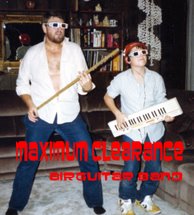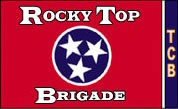The Three Soldiers (also known as
The Three Servicemen) is a bronze statue on the Washington, DC National
Mall commemorating the Vietnam
War.
It was created and designed to complement the Vietnam Veterans Memorial, by adding a more
traditional component to the Memorial.
The
grand plan has long been to erect a full size replica of “The Three
Soldiers” memorial in the “David
Webb Riverfront Park”, as a tribute to Roane County Vietnam
veterans.
The
memorial, believed to be the only “full size” replica in the state, if
not anywhere outside Washington D.C., will be placed in the park’s war memorial
area near the present fountain. Long term plans are to place other memorials
from America’s other wars in this area as money and support comes
along.
At long
last the pieces to the statues came in and were inspected and pre-assembled
earlier this week by Cliff Cole, Gary Todd, and other members of the
Legion.
The
memorial was unloaded and positioned for concrete today at the park. A
formal dedication ceremony will be held at 11AM on Monday (Memorial Day). The replica is
not a full bronze cast, as the one in Washington, but it is what the local
budget would allow. The primary purpose of the memorial is to honor all of the
Roane County veterans that served, and especially those that sacrificed all, in
the Vietnam War.
This well-known sculpture by Frederick Hart portrays three young uniformed
American soldiers. While the military attire is meant to be symbolic and
general in nature, the combat equipment displayed represents the figures as
serving in either the U.S.
Army, or U.S.
Marine Corps during the Vietnam
War.
Of the three men, the lead figure (in the middle)
represents a Marine, as he wears a Type M-1955 body armor vest, which was worn
exclusively by Marines in Vietnam. He is armed only with a Colt
M1911A1 .45 caliber automatic pistol, which is carried
in a Government Issue (GI) M-1916 leather pistol holster, positioned on the
right hip. The M-1916 holster is attached to an M-1956 GI pistol belt, and a
small GI .45 pistol magazine pouch is carried on the belt's left front. The
Marine wears a body-armor vest (but no shirt), along with Tropical Combat
trousers and boots; he wears no headgear. Like his comrades, he carries a pair
of plastic GI 1-quart canteens, carried in two M-1956 canteen covers that are
attached to his pistol belt, and situated at the rear center hip.
The man on the right wears combat equipment
consistent with a U.S. Army Soldier, and specifically, a Type M69 body armor vest, which was the primary
armor vest used mainly by U.S. Army personnel in Vietnam, from about 1967 on.
His M69 armor vest is unsecured, and worn fully open at the front, which was a
typical fashion of troops in Vietnam, as a measure in which to promote
ventilation (in spite of reducing the vest's overall protective levels). Draped
around the collar of his M69 vest and hanging on his chest front, this Soldier
carries a GI towel, which served to absorb sweat and cushioned heavy loads, and
was a common practice of many Soldiers in Vietnam. In his left hand he carries
an M16A1 rifle, the main battle rifle for both
Soldiers and Marines, from about 1967 on. His uniform consists of the Tropical
Combat Uniform (jacket and trousers) and "jungle" boots. As was typically done
by U.S. combat personnel fighting in the oppressive tropical environment of
Vietnam, the uniform jacket's sleeves are rolled up. In his right hand, this
Soldier holds an M1 steel helmet covered with a camouflage cover, that is
secured over the helmet with an elastic headband (which itself retains a small
bottle of GI insect repellent on the right side). He also wears an M-1956 GI
pistol belt over the waist of his uniform jacket, and it retains a GI 1-quart
canteen and M-1956 canteen cover, situated at the left rear hip. Lastly, on a GI
neck chain set, he wears a pair of GI Identification Tags (i.e. "Dog
Tags"), which are visible on his bare chest, seen
through the open front of his uniform jacket and armor vest.
The man on the left is slightly less specific in
the service representation of his gear and uniform, but he appears to be a U.S.
Army Soldier, as he wears a Tropical ("Boonie") Hat, which was widely worn by
Army combat personnel in Vietnam (particularly towards the latter part of the
war), and to a much lesser extent by Marines. His uniform consists of the
Tropical Combat Jacket and Trousers, and "jungle" boots. Like his comrade on his
far left, his uniform jacket's sleeves are rolled up. This man wears no body
armor, and is armed only with an M60
machine gun, and he carries two separate belts of 7.62mm
machine gun ammunition draped and criss-crossed over his torso. He is also
wearing an M17
Protective (Gas) Mask carrier on his left thigh,
although U.S. troops infrequently wore or used gas masks in Vietnam. (They were
used primarily when tear
gas (CS gas) was employed in combat, such as by
tunnel
rats, and by troops engaged in urban/city combat, such
as the Marines in Hue
City in January and February, 1968). Under his uniform
jacket, he also wears a GI M-1956 pistol belt, with two M-1956 canteen covers
that are attached, each carrying a GI 1-quart canteens, and situated at the
right rear hip. In order to portray the major ethnic groups that were
represented in the ranks of U.S. combat personnel that served in Vietnam, the
statue's three men are purposely identifiable as Caucasian (the lead man), African American (man on right), and Hispanic (man on left).
These three figures were based on six actual young
men models, of which two (the Caucasian, and the African-American) were
active-duty Marines at the time that the sculpture was commissioned. The
Caucasian figure was modeled after James E. Connell, III, then a Corporal in the
Marines; the African-American figure was modeled after three men, Marine
Corporal Terrance Green, Rodney Sherrill and Scotty Dillingham; the Hispanic
figure was modeled after Guillermo Smith De Perez DeLeon.
It is hoped that if you are a VET, from any
theater of war, you will come to the ceremony Monday and remember those that
served and those that have gone on before us.
My thanks to the hard working Harriman American
Legionnaires, and David Webb, for bringing this memorial to Riverfront
Park.
























No comments:
Post a Comment